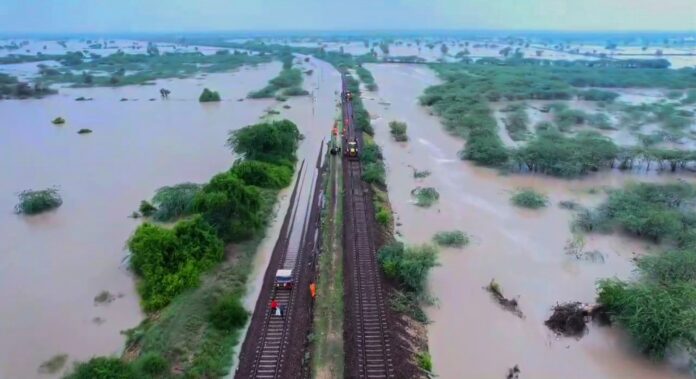Central India received 19 per cent more rainfall than the long-period average for the region.
New Delhi:
A total of 1,492 people died in India during extreme weather events in the 2024 monsoon season, according to data compiled by the India Meteorological Department.
The data revealed that 895 people lost their lives due to floods and rain-related incidents, while 597 fatalities were caused by thunderstorms and lightning strikes during the monsoon season.
The IMD reported that the country experienced 525 heavy rainfall events (precipitation between 115.6 mm and 204.5 mm) — the highest in the last five years — and 96 extremely heavy rainfall events (above 204.5 mm) during the 2024 monsoon.
According to the data, 17 people died from heatwaves — 13 in Jharkhand and four in Rajasthan — during the early part of the season.
Kerala, which witnessed devastating landslides in the ecologically fragile Wayanad district on July 30, recorded 397 deaths due to floods and heavy rains.
Assam and Madhya Pradesh recorded 102 and 100 deaths, respectively, due to floods and heavy rains.
In the national capital, 13 deaths were reported as a result of floods and heavy rains.
The data also revealed that Madhya Pradesh recorded the highest number of deaths (189) due to thunderstorms and lightning strikes, followed by Uttar Pradesh (138), Bihar (61), and Jharkhand (53).
The 2024 southwest monsoon season officially ended on Monday, with India recording 934.8 mm of rainfall — 107.6 per cent of the long-period average and the highest since 2020.
Central India received 19 per cent more rainfall than the long-period average for the region, the southern peninsula recorded 14 per cent more than normal, and northwest India saw 7 per cent more than usual.
In contrast, east and northeast India registered 14 per cent less rainfall than normal, according to the data.
The country experienced an 11 per cent rainfall deficit in June, followed by an excess of 9 per cent in July, 15.3 per cent in August, and 11.6 per cent in September.
Only three meteorological subdivisions recorded deficient rainfall this monsoon season.
India’s geographical area is divided into 36 meteorological subdivisions. Twenty-one subdivisions recorded normal rainfall, 10 experienced excess rainfall, and two saw large excess rainfall.
(Except for the headline, this story has not been edited by The Hindkesharistaff and is published from a syndicated feed.)




